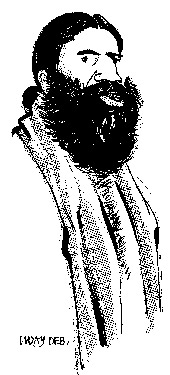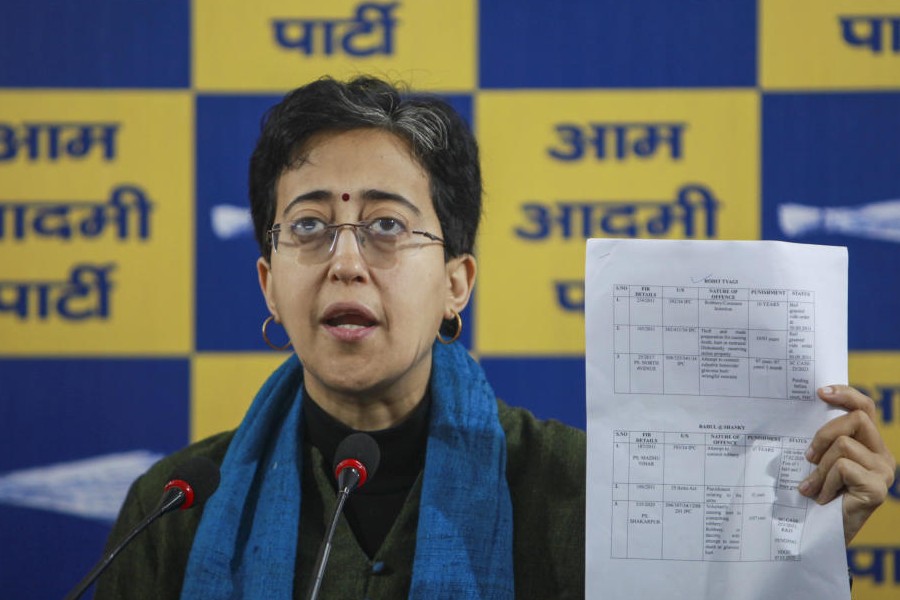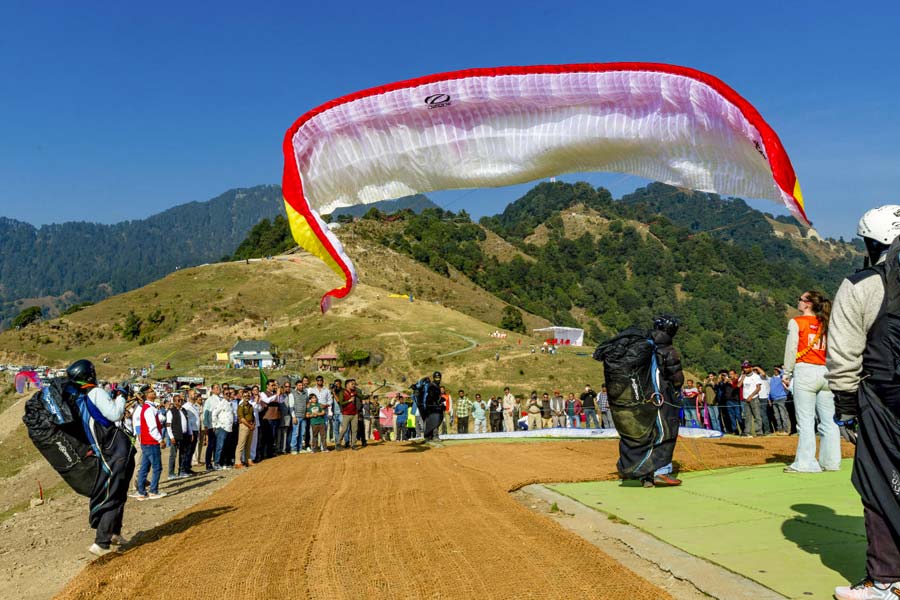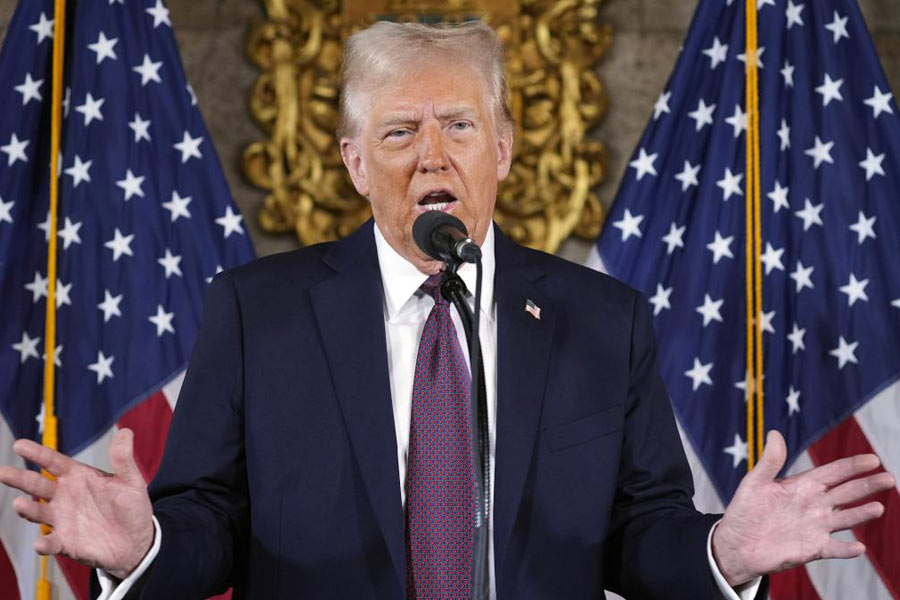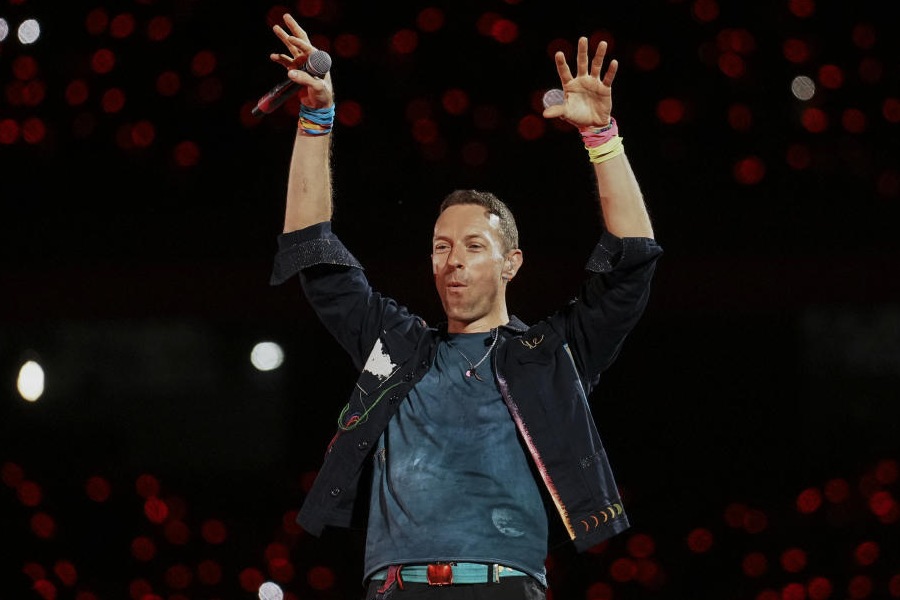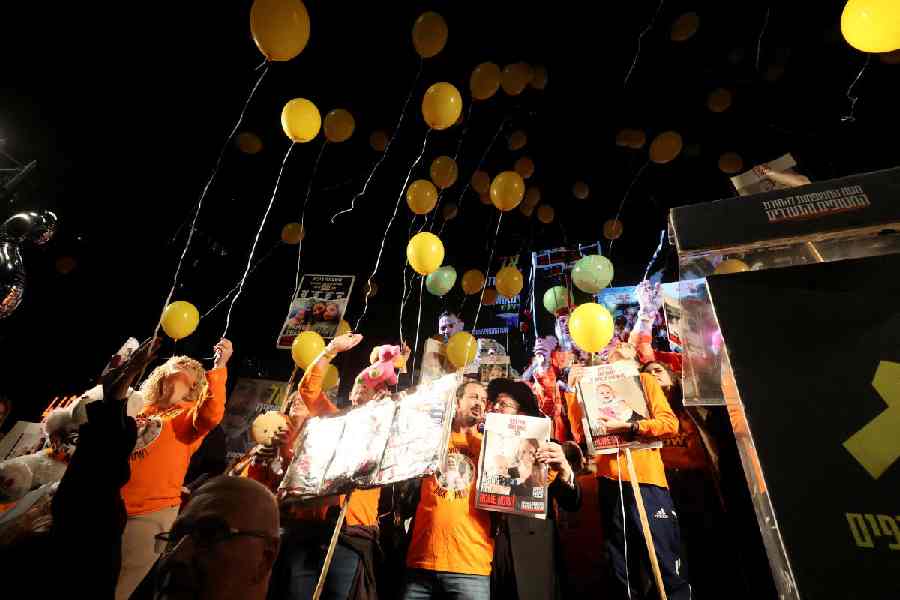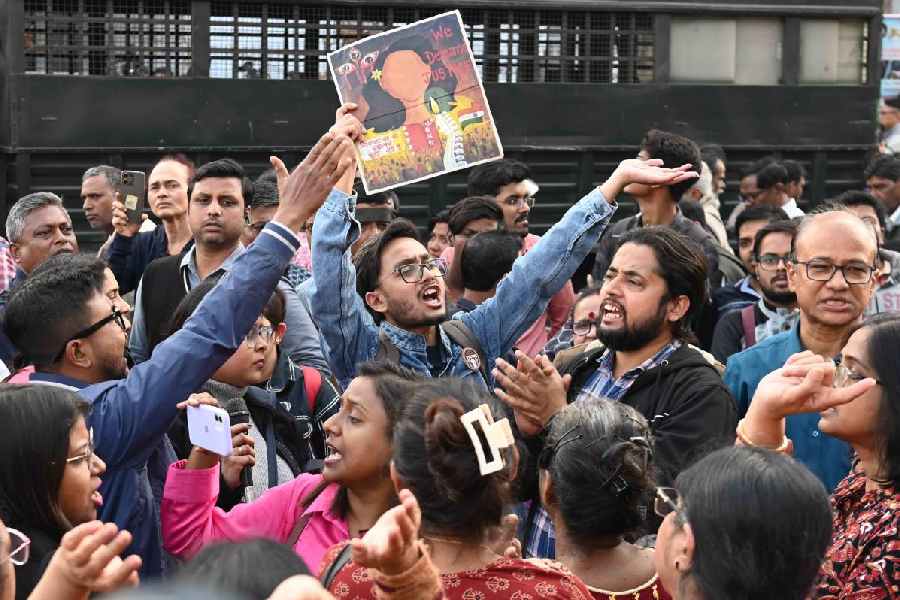 |
Swamiji ki jai, Maharaj ki jai’ — the chants rend the air, as Ramdev zips away in the cool confines of a Toyota Innova after casting his divine blessings on the 10,000-strong crowd gathered at Rabindra Sarobar stadium in Calcutta. The six-day workshop that started on March 21 saw the eternal hopefuls trying to breathe away their diseases to the accompaniment of a melodious flute and, at the end of each session, by guffawing in chorus.
Ramdev or rather Dr Ramdev — in January this year, he was conferred an honorary doctorate degree by the Kalinga Institute of Industrial Technology in Orissa — is no miracle man. The bearded, saffron dhoti-clad, telegenic yogi with neatly trimmed nails, flowing black hair tied in a knot, standing tall in a pair of platform-heel wooden sandals, doesn’t walk on water. Nor does he raise himself from the ground in the yogic posture or promise to cure AIDS. But this self-professed purusharthavadi (male chauvinist), rashtravadi (nationalist) and maanavvadi (humanist) has an agenda: building a nation of healthy individuals by performing the Herculean task of curing people of all diseases. That qualifies him as a godman.
And like all godmen, he enjoys a huge fan following that includes both the elite and rural populace. From India’s President A.P.J. Abdul Kalam to politicians like Sharad Pawar, Mulayam Singh Yadav, Ambika Soni to industrialists like the Hindujas, Rahul Bajaj of Bajaj Auto Ltd, Brijmohan Lall Munjal of Hero Honda and Sushil Goenka of Emami, everyone seems eager to pay obeisance to him. It was one of the faith channels that first brought Ramdev into the limelight. His yoga sessions telecast on the channel two times daily draw people in droves, as he claims to have cured many of diabetes, asthma, high blood pressure and other diseases.
I brace myself for an early morning meeting with Ramdev who is put up at Emami’s managing director Sushil Goenka’s residence on Southern Avenue in Calcutta. The huge air-conditioned hall on the first floor is lined with paintings of Ganesha playing the flute or dancing. Intoxicating smells from the kitchen, adjacent to the hall, waft in whenever someone opens the ornately carved wooden door to the hall.
Suddenly, Sushil Goenka’s wife Indu makes an entry. She switches on two more fans for my comfort, places some apples, oranges, papaya and sapota, or chikoos, on a silver platter kept on a dresser in one corner of the room and barks orders over her cellphone. “I want some apples... no, not the imported variety, chikoo, water melon, papaya… mind you, all the fruits have to be barhiya and meetha, Swamiji has only sweet fruits.”
Once she hangs up, my enquiry on his diet elicits a response. “He has two meals a day — one between 10 and 10.30 am and another between 6 and 6.30 pm.” What about the rest of the day? “In the morning after yoga, he has lauki-gajar juice. Anaaj nahin khatay (he doesn’t eat cereals). No daal, chawal, gehun for him. Only fruits and vegetables,” she informs me helpfully.
After what seems like an eternal wait, I am escorted to the spiritual guru’s bedroom where he is seated cross-legged on one side of the double bed, dressed in the same saffron dhoti and chadar. But the man who teaches people to breathe away diseases doesn’t quite take my breath away.
His looks, however, belie his age — or rather the age attributed to him: 50. “How old are you?” The answer is evasive. “Once you take up sanyas — which I did on April 9, 1995, when I was initiated into the ascetic order by Swami Shankardevji Maharaj — there is a protocol which prevents you from talking about your past life. As he prepares for a new life, his past life — including caste, age, family — gets erased,” he says with a smile.
The scar on his forehead is strangely reminiscent of Harry Potter. How did that happen? “I must have been five years old at that time. I was playing on the verandah of our two-storied house. I leaned over the railing to see my aunt who was on the ground floor and fell 15 feet down, headlong on some pebbles. I remember my father carrying me on a horseback to the doctor who gave me nine stitches.”
He talks slowly and in chaste Hindi. As he speaks, his voice carries the conviction that comes easily to men who bask in the glory of the halo people create around them. “I don’t work on the illness but rather on the body’s software system and try to achieve a balance among the brain, body and mind. Once the system improves, the illness disappears,” he says, shifting gear. “I am not a bhagyavaadi (fatalist). The only ‘isms’ I believe in are nationalism and humanism.”
In fact, he says, it is for his nationalist streak that he charges a fee for his lessons in yoga. “I take money for my country, for the organic research that we are involved with at Patanjali Yog Peeth in Haridwar, and for the Patanjali Vishwa Vidyalaya that we plan to set up in the next three years.”
The yogi’s personal story is as stereotypically intriguing as those of other sadhu-maharajs who help define India as a land of snake charmers and yogis. Consider this: he suffered paralysis on the left side of his body when he was two — “I hardly remember it and never asked my mother about it” — but fully recovered by the age of nine when he started doing yoga. The only visible sign now is his slightly shrunken left eye.
At 14, he paid heed to his inner calling. “By that time I had read the works of Nishidanand and was much influenced by his teachings. So I decided to become a sanyasi and work dedicatedly for the betterment of society and my country.” He renounced family life, immersing himself in the study of Sanskrit and Vedic literature. He emphasises, though, that this has nothing to do with escapism. “It’s a conscious choice one makes and lives by.” Thereafter, he spent many years wandering in the Himalayas learning yoga and meditation before he officially became an ascetic in 1995, the same year that Divya Yoga Mandir Trust was established in Haridwar.
That’s one place which has been visited by many of India ’s Who’s Who, all in a bid to seek the guidance of this self-professed maargdarshak (one who shows the way). “I have taught the Indian President yoga and even conducted a special one-hour session at Rashtrapati Bhavan. He also came to Patanjali Yog Peeth,” says the yogi. “Some 15 chief ministers have learnt yoga from me, besides corporate heads like the Hindujas, Rahul Bajaj and Brijmohan Lall Munjal. They all respect me and have praised my work because they know that, like them, I too believe in the welfare of our nation state.”
While that may all be very well, the yogi is time and again dogged by controversy. CPM politburo member Brinda Karat has been going hammer and tongs at him, alleging that the ayurvedic medicines prepared by Ramdev contain animal parts and human bones and that the yogi has violated licensing and labelling provisions. The health ministry has also taken strong exception to Ramdev’s claims of curing AIDS.
“Our medicines have been tested two times. Never have we used human skulls and bones for treatment. But since time immemorial, ayurveda has made use of animal parts. Even pearls or shells are part of the animal kingdom,” he says in self-defence.
As to the hullabaloo over treating cancer and AIDS patients, he continues in the same breath, “It’s strange that instead of being praised for treating 500 cancer patients — starting from those suffering from breast cancer to brain tumour — I end up being criticised. I have also cured blood cancer within three to six months. In the case of AIDS, by using a combination of yoga and ayurveda, I have succeeded in increasing the CD-4 cell count from 15 to 50 in some AIDS patients.” The yogi is all set to bring out a book titled Vigyan Ki Kasauti Par Yoga which will be an answer to all the allegations levelled at his method of treatment.
The death of 13-year-old Manoj Das, while allegedly practising a breathing exercise at one of Ramdev’s yoga camps in Haridwar late last year, had made headlines. “Out of so many crores, if one person dies, how does that negate the practice of yoga and pranayam? I always emphasise, do as much as your body allows you to, don’t pressurise yourself. My breathing techniques can be followed by anyone. Those who are dead against my yogic exercises are angry because I have made it a household practice,” justifies Ramdev.
Time to take a deep breath. Guffawing in chorus may also help.

